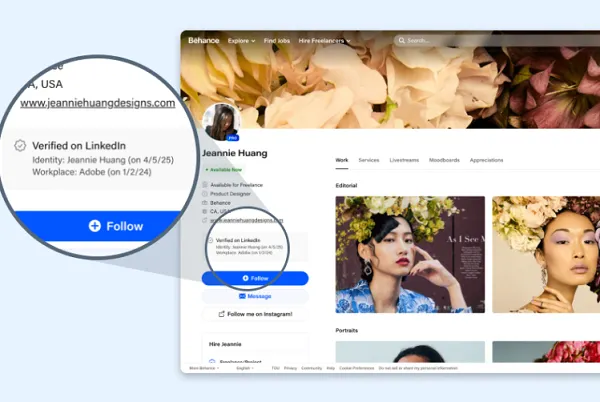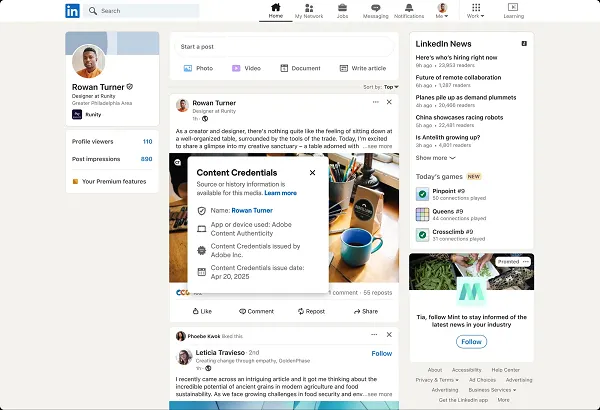LinkedIn will now allow third-party platforms to show its ID verification markers, as a way to broaden identification to extra net components.
Which may very well be a great way to solidify skilled connections and relationships, by including an additional layer of assurance inside the course of.
Initially launched in 2023, LinkedIn’s free ID affirmation course of makes use of third-party suppliers to verify a customers’ identification, which then permits these customers to show a affirmation tick within the app.
With this, all customers are in a position to verify that they’re certainly who they are saying, versus celeb or paid verification checkmarks in different apps.
LinkedIn’s been increasing the choice to extra areas, in partnership with native ID verification suppliers. And now, it’s additionally enabling companion platforms to show its ID verifications in their very own apps.

As you possibly can see on this instance, Adobe is now integrating LinkedIn ID into its listings, increasing the worth of LinkedIn’s verification, whereas additionally eliminating the necessity for Adobe to ascertain its personal verification course of.
As reported by The Verge:
“Adobe is integrating LinkedIn verification into its new Content material Authenticity app and present Behance portfolio platform, permitting creators who’ve gone by means of LinkedIn’s verification to show a “Verified on LinkedIn” badge on their profiles. If verified creators use Adobe’s digital Content material Credentials instruments, their identification may even seem alongside their work every time it’s shared on LinkedIn.”
Which may very well be a useful replace.
LinkedIn says that over 80 million of its members have undertaken its voluntary ID affirmation course of, and that increasing community of verified, ID-checked profiles might assist to raised hyperlink on-line identities to actual individuals, as a way to fight spam, bot farming, and impersonation.
Many have lengthy referred to as for common verification in social apps, as a way to higher implement behavioral guidelines, by making individuals extra liable for what they are saying. However anonymity can also be a key consideration for a lot of customers, and to this point, there’s been little motion on attempting to implement legal guidelines requiring consumer ID.
However initiatives like this present another, and given its skilled focus, you possibly can see why LinkedIn members could be extra eager to point out that they’re actual individuals, as a way to assist safe enterprise relationships.
However it additionally exhibits that common ID verification is feasible, by utilizing third-party companions.
Perhaps that’s a path for regulators to think about, which might ultimately result in a type of ID being required for all social media accounts.
Alongside the identical line, LinkedIn can also be planning to broaden its help for Adobe’s “Content material Credentials”, which permits creators to connect possession over content material through metadata embedded into it.

Together, these new types of ID verification and digital possession might add one other layer of assurance to the broader net.
And within the age of bettering AI fakes, that is set to be a subject of serious focus.


![How AI Use is Evolving Over Time [Infographic] How AI Use is Evolving Over Time [Infographic]](https://i2.wp.com/imgproxy.divecdn.com/YImJiiJ6E8mfDrbZ78ZFcZc03278v7-glxmQt_hx4hI/g:ce/rs:fit:770:435/Z3M6Ly9kaXZlc2l0ZS1zdG9yYWdlL2RpdmVpbWFnZS9ob3dfcGVvcGxlX3VzZV9BSV8xLnBuZw==.webp?w=75&resize=75,75&ssl=1)
